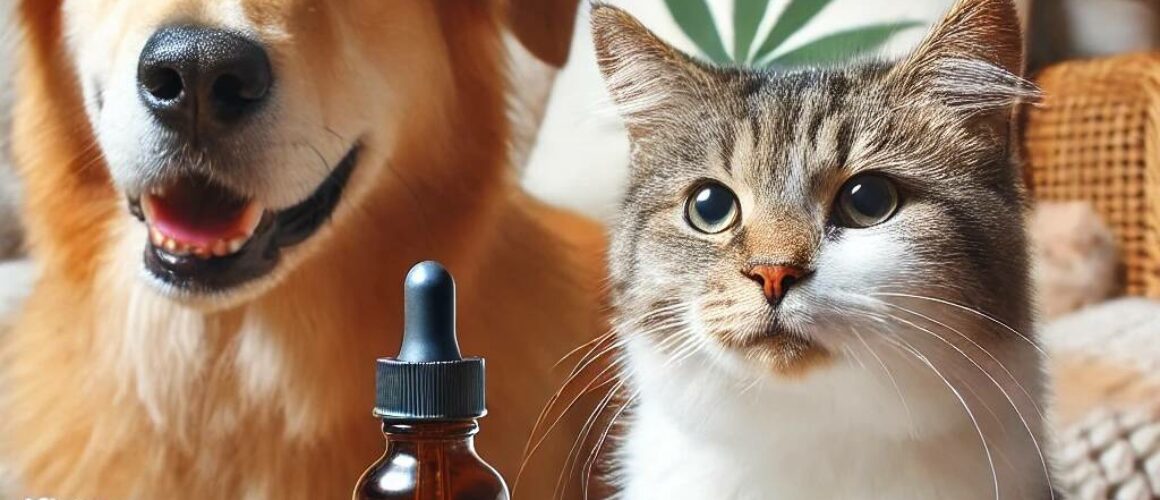CBD for Pets: How to Safely Use CBD to Support Your Pet’s Health
As pet owners continue to explore natural alternatives for improving their pets’ health and well-being, CBD has emerged as a popular option. From helping with anxiety to supporting joint health, CBD can offer significant benefits for pets when used safely. In this guide, we’ll cover the potential benefits of CBD for pets and offer advice on how to incorporate it into their routine.
Potential Benefits of CBD for Pets
1. Anxiety Relief
Pets often experience anxiety due to separation, loud noises, or new environments. CBD has been shown to help calm pets by interacting with their endocannabinoid system (ECS), which helps regulate mood and stress responses. It can help your pet feel more relaxed without the sedative effects of traditional medications. This can be particularly helpful during thunderstorms, fireworks, or when your pet is left alone for extended periods.
- How It Works: CBD interacts with receptors in your pet’s ECS, supporting serotonin production, which contributes to a calming effect.
2. Joint Pain and Inflammation
As pets age, many experience joint pain or mobility issues due to arthritis or inflammation. CBD’s anti-inflammatory properties may help reduce pain and improve mobility in pets, allowing them to enjoy more active lives.
- How It Works: CBD can reduce the production of inflammatory molecules like cytokines, which can help alleviate joint pain and promote better mobility in aging pets.
3. Overall Well-Being
CBD supports overall wellness by helping pets manage stress, maintain healthy appetites, and improve sleep quality. It also supports cognitive function in aging pets, keeping them more alert and responsive.
How to Safely Use CBD for Pets
1. Start with a Low Dose
When introducing CBD to your pet’s routine, it’s essential to start with a low dose and gradually increase it as needed. Begin by giving them a small amount and observing how they react. Each pet’s size, weight, and sensitivity can vary, so adjusting the dose slowly helps ensure their comfort.
- Dosage Guidelines: A general recommendation is 0.1 mg to 0.5 mg of CBD per pound of body weight. However, always consult with your veterinarian to determine the appropriate dosage for your pet’s specific needs.
2. Choose the Right Products
It’s critical to use pet-specific CBD products that are formulated with safe dosages and ingredients. Ensure the product is free of THC, which can be toxic to pets. Look for third-party tested products to guarantee quality and safety.
- Creating Better Days Calming Chews: These chews contain 900mg of CBD and are designed specifically for pets to help manage anxiety and promote calmness. They are THC-free and third-party tested, ensuring your pet’s safety and comfort. More info here.
- Lazarus Naturals Dog Treats: These treats are perfect for pets dealing with anxiety or joint pain. Lazarus Naturals offers a variety of full-spectrum CBD dog treats, including Calming Support Dog Chews and Mobility Support Dog Chews, which contain ingredients to support calmness and joint health.
3. Monitor Your Pet’s Response
After administering CBD, carefully monitor your pet for any changes in behavior, mobility, or appetite. While CBD is generally safe for pets, some may experience mild side effects like drowsiness or digestive upset. If any adverse effects occur, reduce the dosage or discontinue use and consult your veterinarian.
4. Consult Your Veterinarian
Before starting any new supplement, including CBD, it’s always advisable to consult your veterinarian, especially if your pet is on medication or has pre-existing health conditions. Your vet can provide guidance on dosing and identify any potential interactions with other treatments.
Conclusion
CBD can be a valuable addition to your pet’s health regimen, providing relief from anxiety, joint pain, and supporting overall well-being. High-quality products like Creating Better Days Calming Chews and Lazarus Naturals Dog Treats offer safe and effective options for your furry friends. Start with a low dose, monitor your pet’s response, and consult with your veterinarian for best results.

